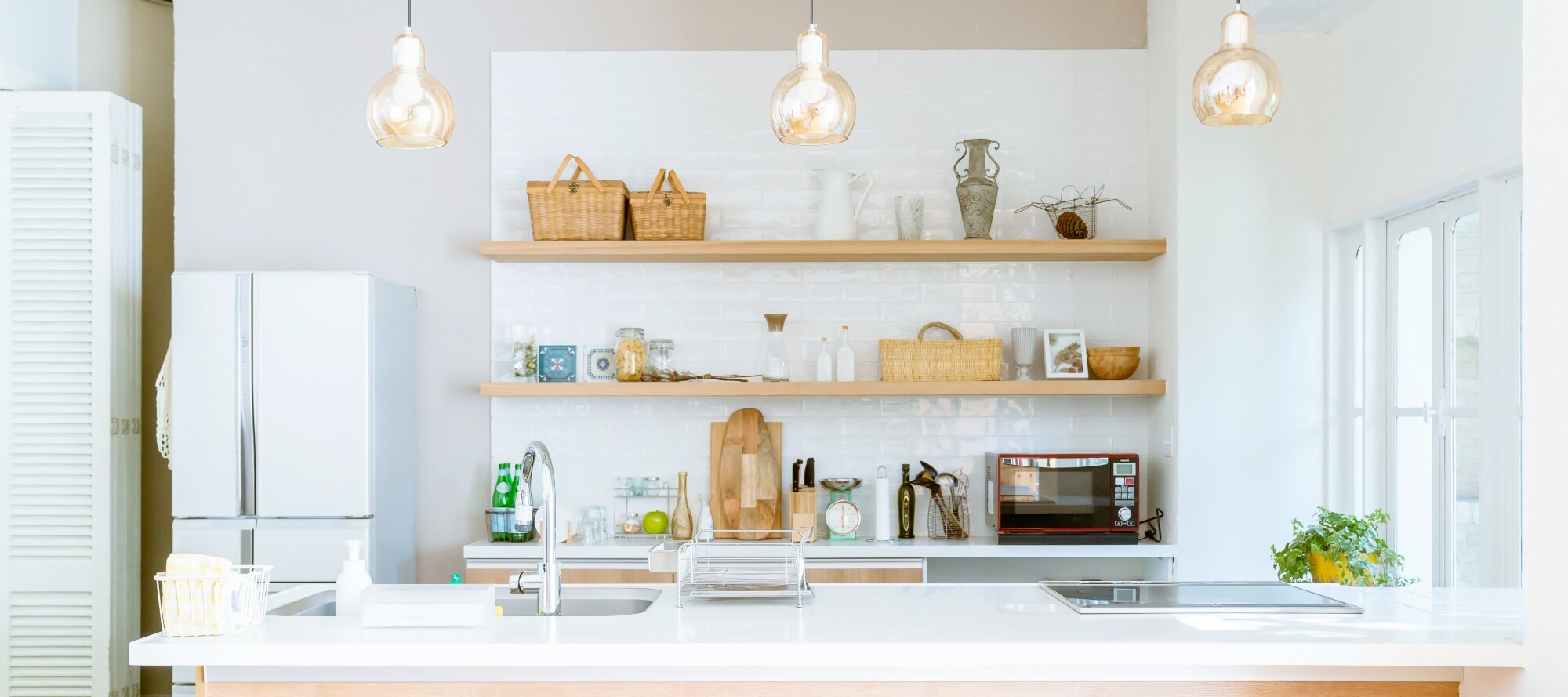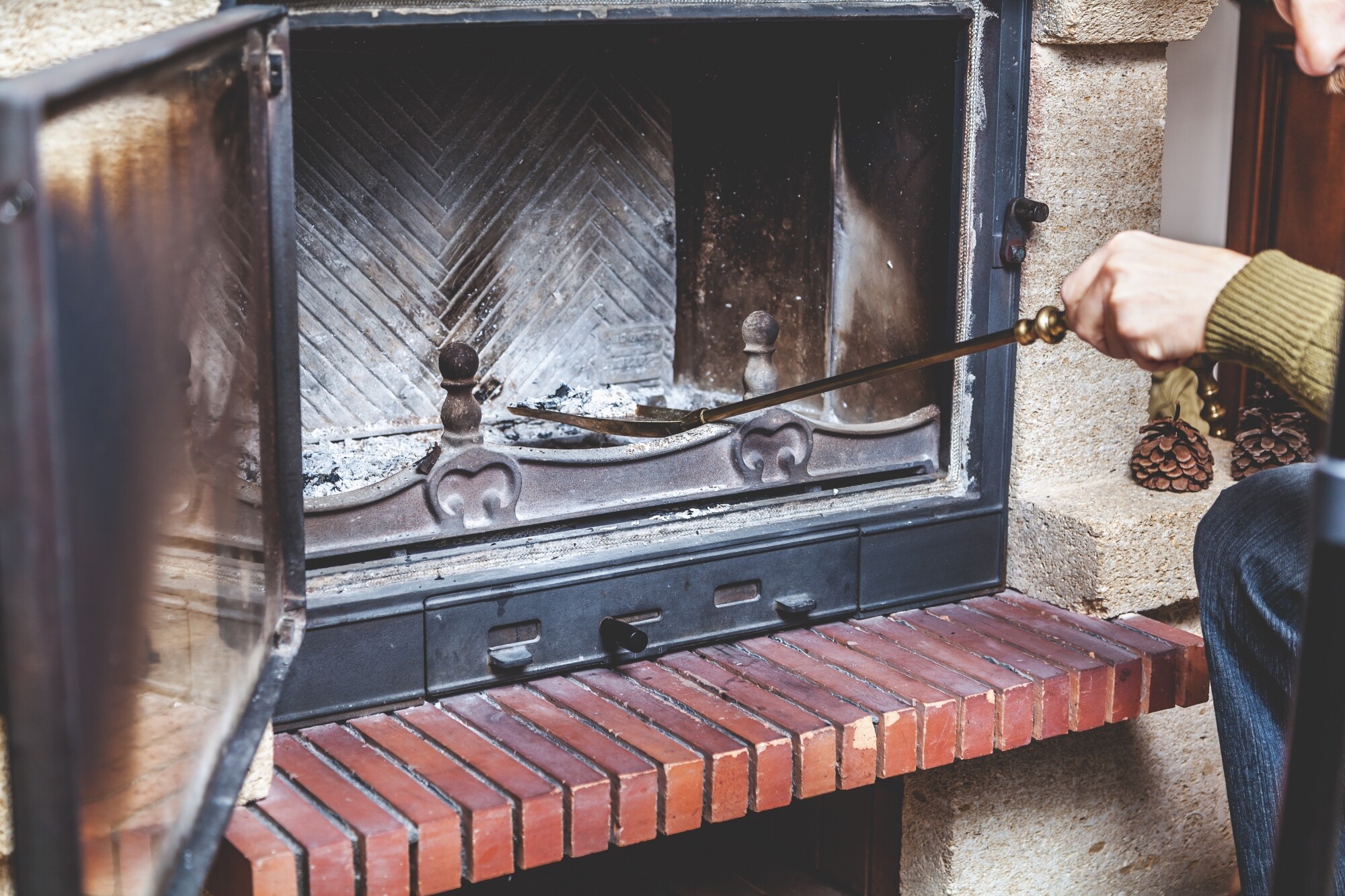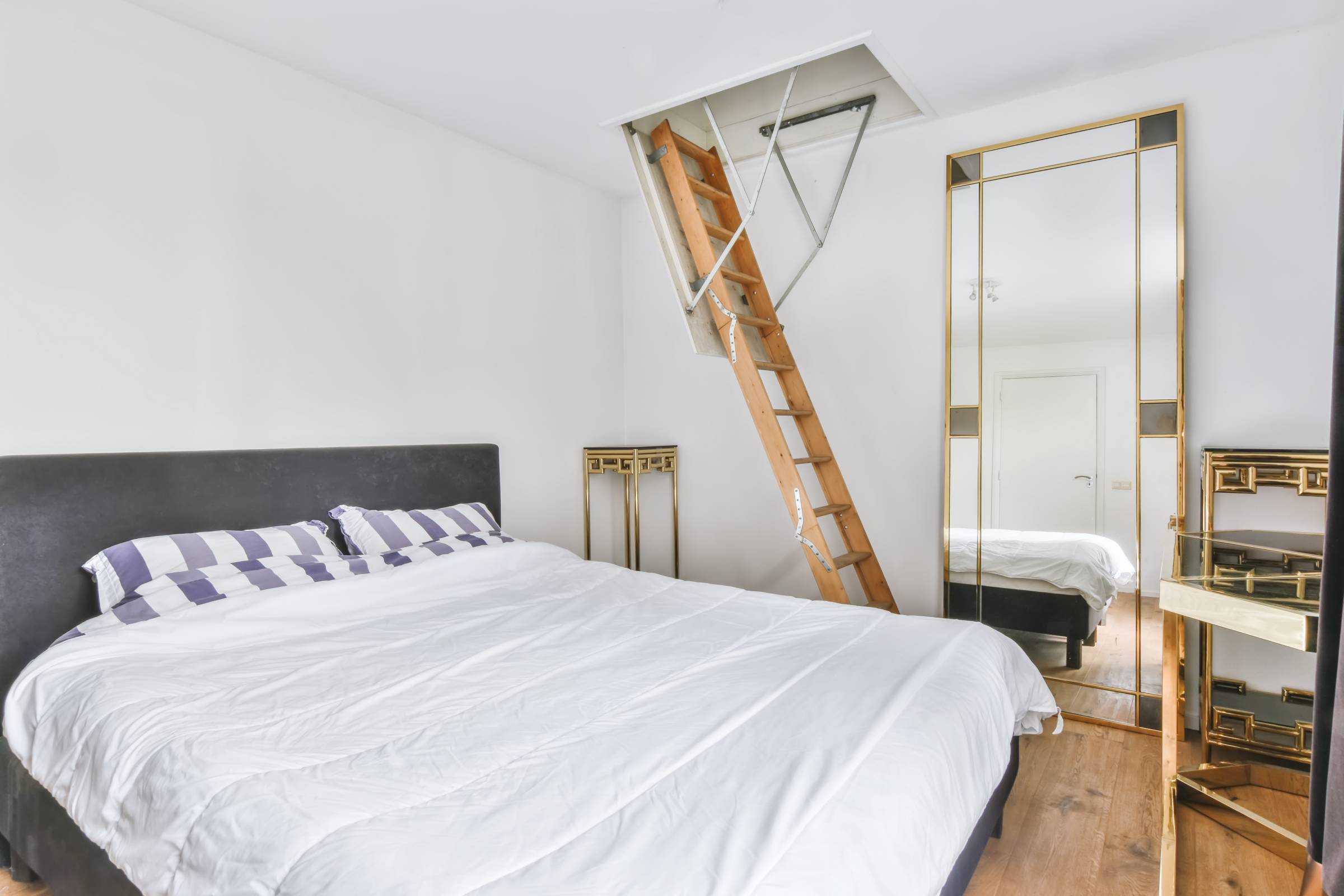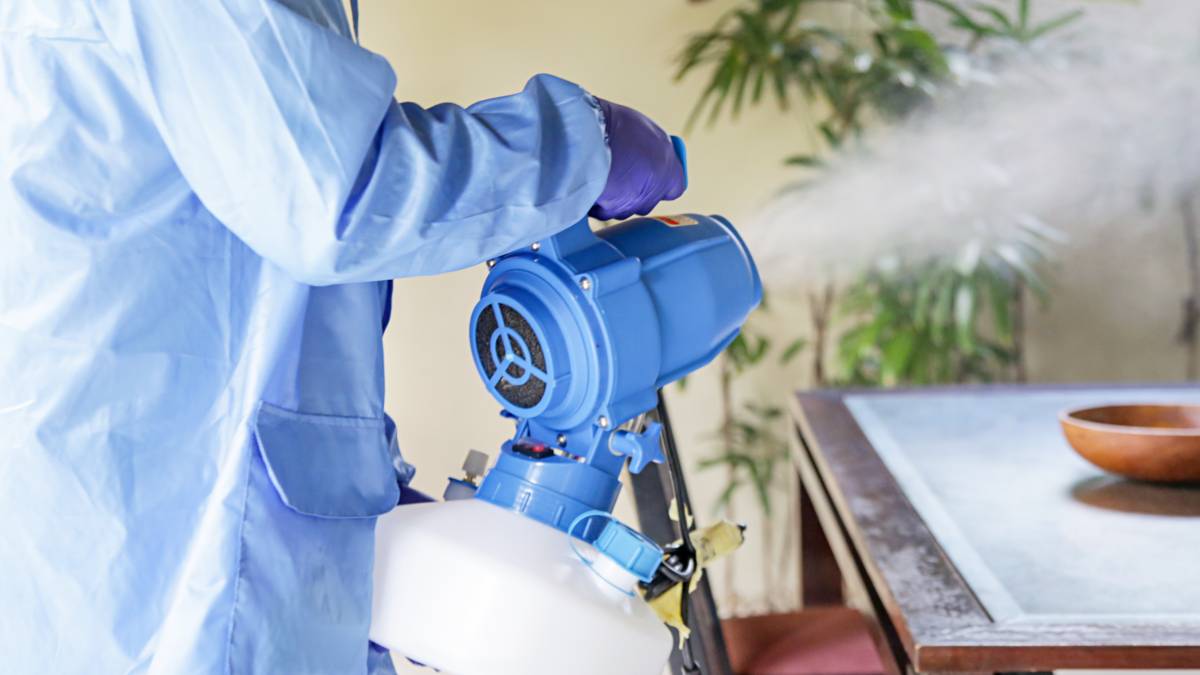- Home/
- Guides/
- House Cleaning/
- How to Clean Light Fixtures
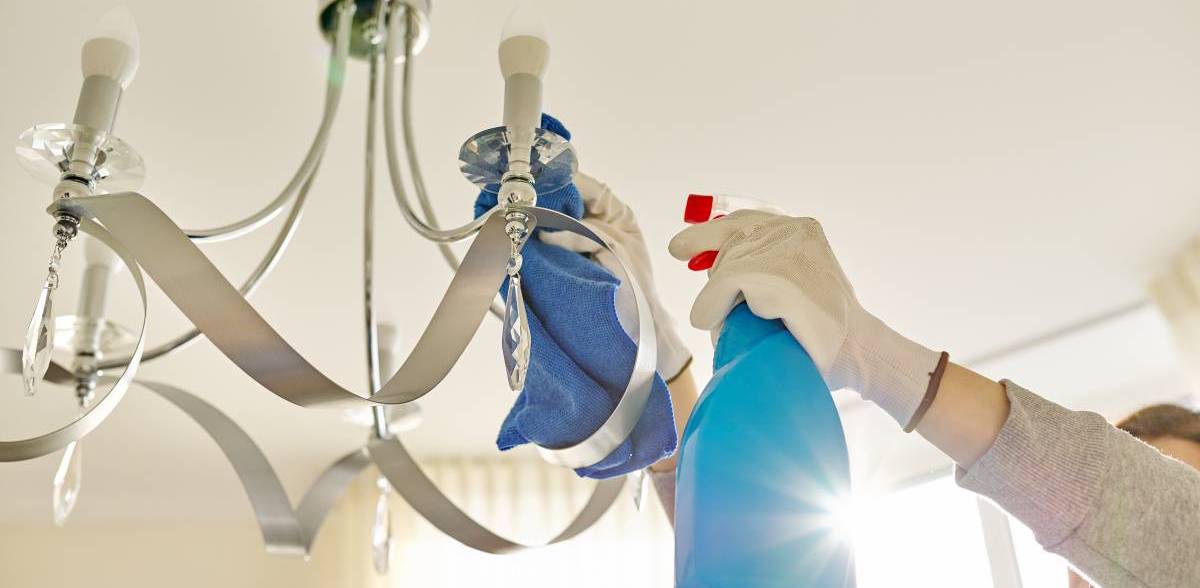
How to clean light fixtures
Learn how to clean different types of light fixtures to keep your home shining bright and dust-free.
Find cleaning servicesPublished on
Keeping your home sparkling clean can be a constant battle, with some areas proving more difficult to maintain than others. One such area is light fixtures. These often-overlooked areas can easily collect dust, cobwebs, and even dead bugs, making them unsightly and potentially unhygienic.
However, with the right approach, cleaning light fixtures can be manageable. You can hire a professional cleaner or learn how to properly clean your fixtures yourself, depending on the material they are made of.
In this article, we will explore different cleaning methods for different types of light fixtures.
Tools you need for cleaning light fixtures
Cleaning light fixtures is easy enough if you know what you need ahead of time.
Here are some tools to prepare:
- Stepladder
- Electrostatic duster - We suggest having an extendable one for hard-to-reach places.
- Microfibre cloths/towels - Reserve a clean one for wiping down after.
- Cleaning solution - There are types of glass that easily get clouded by cleaning solutions. Before you start rubbing the glass fixture, test the solution in a small area to see the effect first.
- Dish soap - To get any grease off
- Soft sponge
- Dishpan/bucket
- Warm water
- Spray bottle
- Vacuum - For paper or fabric light fixtures
Important precautions
Once you’re all set, make sure to do these steps first for easy and safe cleaning.
- Turn off the lights - Killing the power at the breaker box can prevent accidental shocks.
- Let the light bulbs cool down first.
- If your light fixture needs some disassembly, make sure to organise and sketch out how to reassemble the light fixture.
- If any fragile parts need to be removed, store them in a safe space to avoid breaking them.
How to clean glass light fixtures
Glass light fixtures come in various types, shapes, and sizes. They’re always clean and light to look at, but that’s not always the case if you leave them to collect gunk.
Luckily enough, they’re easy to clean but be warned, though, glass is fragile. It’s best to handle them with care and intention.
Here’s the best way to clean light fixtures:
Step 1: Unscrew or disassemble the glass from the light fixture. From there, dispose of the debris like dust, cobwebs, bugs and other gunk into the bin.
Step 2: Use your duster to dust off any remaining debris.
Step 3: Get your microfibre cloth, lightly dampen it with your cleaning solution or water, and give the glass a good wipe inside and outside.
Usually, this is all you need, but now and then, a good washing helps. It’s good to wash your fixtures at least twice a year.Step 4: Fill your dish pan with warm water and your cleaning solution of choice. Place your glass light fixtures and let them soak for a few minutes.
Step 5: Give the glass a soft scrub, either with a microfibre cloth or a very soft sponge.
Step 6: Rinse and dry off with a clean microfibre cloth. Preferably with a clean one too.
Tip: This goes without saying, but veer away from using abrasive cleaning materials like steel wool and a scouring pad (the rough side of the sponge). Using these can leave visible scratches on the glass.
How to clean recessed light fixtures
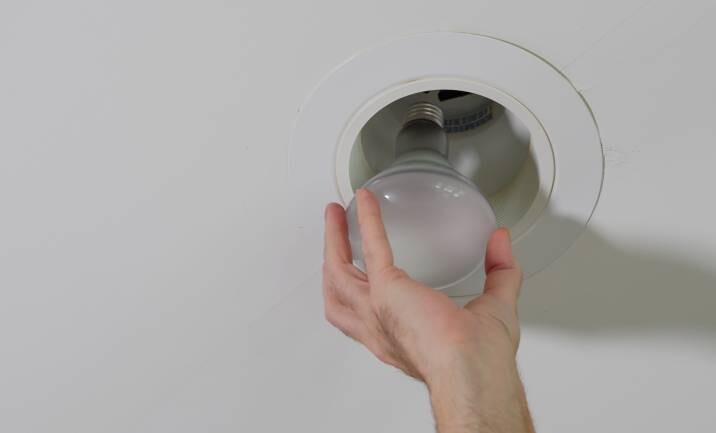
If this is the type of light fixture you have, then it’ll be a walk in the park! Here’s how to clean recessed light fixtures:
Step 1: Prepare your stepladder and, if possible, grab a helping hand to keep the ladder sturdy.
Step 2: If your lighting has a dome or a diffuser panel, gently dismantle it and set it aside for cleaning.
Step 3: Remove the cooled-off light bulb and store it away for cleaning later on.
Step 4: Get a dry microfibre cloth and give the light fixture a good wipe-down, making sure to avoid the light socket. If there’s any gunk that doesn’t want to give, lightly dampen your microfibre cloth with your water/vinegar solution and rub away.
Step 5: Give your light bulbs and dome/diffusers a good cleaning with your microfibre cloth and your cleaning solution of choice.
Step 6: Dry everything off with a clean microfibre cloth before reassembling them.
If you have a large space (such as a commercial building) with many light fixtures that need cleaning, you can hire commercial cleaners to help you get the job done.
How to clean fabric and paper light fixtures
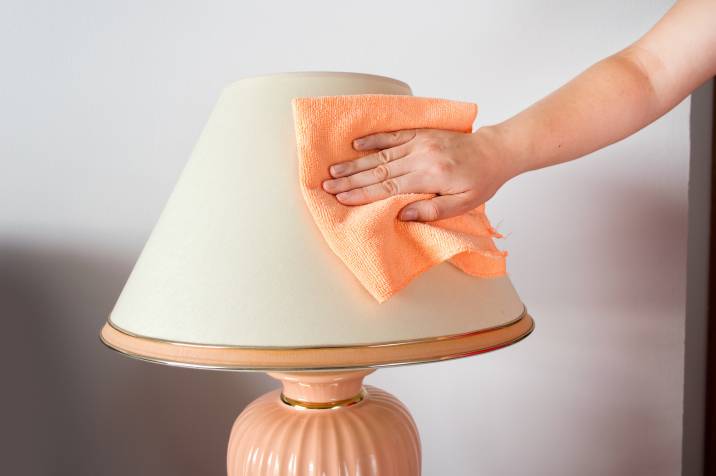
Fabric and paper light fixtures are stunning. However, they are prone to collecting dust and gunk. They can be tricky to work with since they can easily tear, especially for paper shades.
Amazingly enough, they are simple to clean. With gentle elbow grease, you’ll get them looking fresh again in no time.
For fabric light fixtures:
Step 1: Disassemble your fabric light fixtures together with their frames.
Step 2: Dust off with a microfibre cloth or an electrostatic duster. If you have your vacuum, use it to get more dust off from the shade.
Step 3: In your dishpan, mix a mild detergent with water. While holding the shade by its frame, submerge the fabric shade and give it a gentle scrub. Be careful with delicate fabrics, though, as they can tear.
Step 4: With warm water, rinse the shades gently and let them hang dry.
For paper light fixtures:
Step 1: If the shade can be disassembled, do so to easily handle it while cleaning.
Step 2: Gently remove dust and gunk with a duster or a microfibre cloth.
Step 3: If there are any noticeable marks or spots, try using a gum eraser to gently rub out the spot.
How to clean metal light fixtures
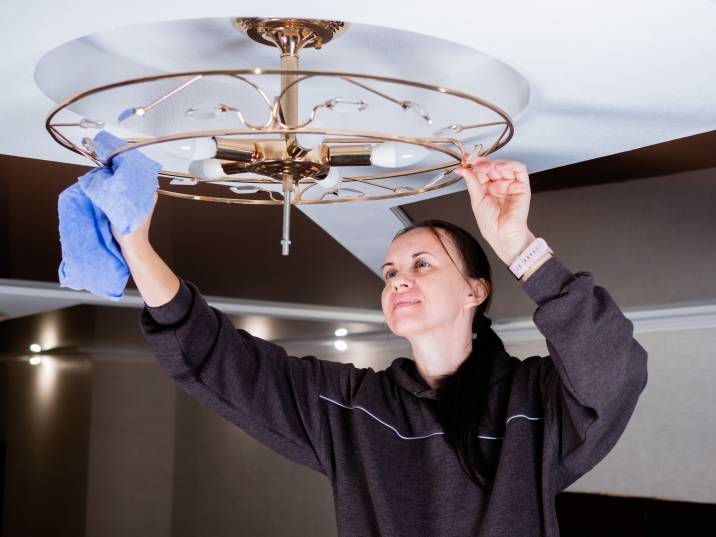
While metal light fixtures are perfect for any setting, they can have a more involved process in keeping them spotless. Not to mention, there are a handful of materials and finishes that need specific care.
For brass light fixtures:
Step 1: Remove the dust. Use a lint-free cloth or a duster and go over the metal.
Step 2: Give the brass fixture a wipe-down with a damp microfibre cloth. Use a mild detergent or soap and hot water to remove any grime. Dry it off right after.
Step 3: Soak a clean towel/cloth in warm or hot vinegar and apply some salt. Go over the brass fixture and give it a good scrub. You might have to do this several times for best results. Rinse off the vinegar with warm soapy water, and dry it off.
Step 4: Go over the brass light fixture with lemon oil. Make sure to cover all areas for the oil to seep in. Remove any excess oils with warm soapy water.
Step 5: Apply a clear coat of UV-resistant urethane finish. This is optional, but it will give the brass an added layer of protection. 3-4 coats will be more than enough.
Buff each layer with a clean cloth for best results.
Note: Steps 4 and 5 will prevent further oxidation and tarnishing on the brass.
For polished metal light fixtures:
Step 1: Dust the fixture with your duster.
Step 2: With a microfibre cloth and mild solution, wipe down the surface and make sure you get into every corner of the fixture. You can use your water/vinegar solution to help it shine more.
Step 3: If you want more shine back to your light fixture, you can use a special cleaning solution. Metal polishes and other oil-based solutions can penetrate the steel and give it a brand-new life.
Step 4: Remove any excess solution with a damp towel, and be sure to remove any humidity on the surface to avoid any oxidation and rust
Tip: Vinegar is a great solution for cleaning rust off light fixtures. It’ll help dissolve the rust, and you can easily wipe it off from there.
However, it’s best to do a spot test on an inconspicuous area before cleaning with vinegar.
If you’re cautious about cleaning metal or chrome light fixtures, a professional cleaner can provide peace of mind.
How to clean chandelier light fixtures
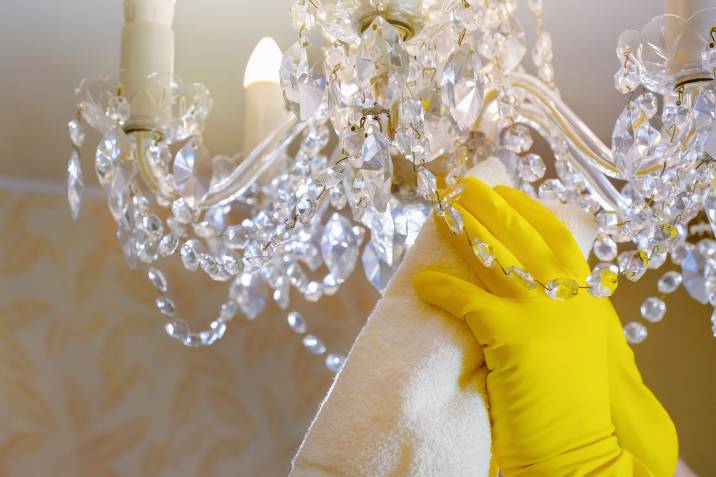
The effort it takes to clean chandelier lights largely depends on how elaborate the setup is. If they’re a simpler setup, you may only need to dust it in place without disassembling it.
However, elaborate chandeliers require a more intentional cleaning.
Step 1: Take photographs of the chandelier. The more references you have, the easier it’ll be to reassemble later.
Step 2: Carefully remove the crystals of your chandelier one by one. It’ll be better to work from top to bottom to keep them organised for reassembly later.
Step 3: Wipe each crystal meticulously with your cleaning solution. Use a microfibre cloth to avoid scratches.
Step 4: Remove any excess cleaning solution with a dry cloth.
Step 5: While the crystals are removed, take this time to go over the metal fixture of the chandelier. Dust off contaminants and use your warm water or cleaning solution to remove hard-to-remove gunk.
Step 6: Place each crystal back in its place one by one while making sure they are in the correct order as before. It’s a good practice to start from the top and end at the bottom, similar to earlier.
Maintaining your light fixtures
Now that you know how to properly clean different types of light fixtures, keeping them dust-free should be a breeze. Regular dusting can also help prevent dirt build-up, so be sure to add this to your cleaning routine.
However, even with regular maintenance, deep cleaning may still be required from time to time. A professional cleaner can be a great option when you’re faced with a more challenging clean or simply don’t have the time. They have the skills and equipment to do the job quickly and efficiently; your light fixtures will be looking their best in no time!
Want to know how much a cleaner would cost you? Here’s a house cleaning cost guide.
FAQs on cleaning light fixtures
You can use a mixture of baking soda and vinegar to clean foggy glasses. Combine to make a paste-like substance. Then, apply it to the glass and let the solution do its magic. About 10-15 mins will do the trick. Wipe down any excess with a damp cloth and dry off.
Caked dust is remarkably easy to clean. You just need a damp cloth and give the surface a good wipe-down. If there is any residue left, just pass over it again and dry off the surface.
Acids are usually a good way to clean any tarnish caused by oxidation. If you don’t have specialised solutions on hand, vinegar will do the trick. Just be sure to remove any excess and clean.
Vinegar is also an excellent cleaning solution for chrome. It can tackle tarnish or staining and give the surface a shine. Go little by little, though, as a small amount goes a long way. Because vinegar is an acid, you should use it carefully and sparingly, especially when removing small amounts of rust or dirt.
Warm water and soap with some elbow grease can get the job done. For faster results, you can use light steel wool or a dedicated polishing cream. Just make sure to not go heavy-handed with the steel wool, as it is an abrasive material. Immediately dry off with a cloth to avoid watermarks.
Find domestic house cleaners, fast
Find a House cleaner
Related articles
Related price guides
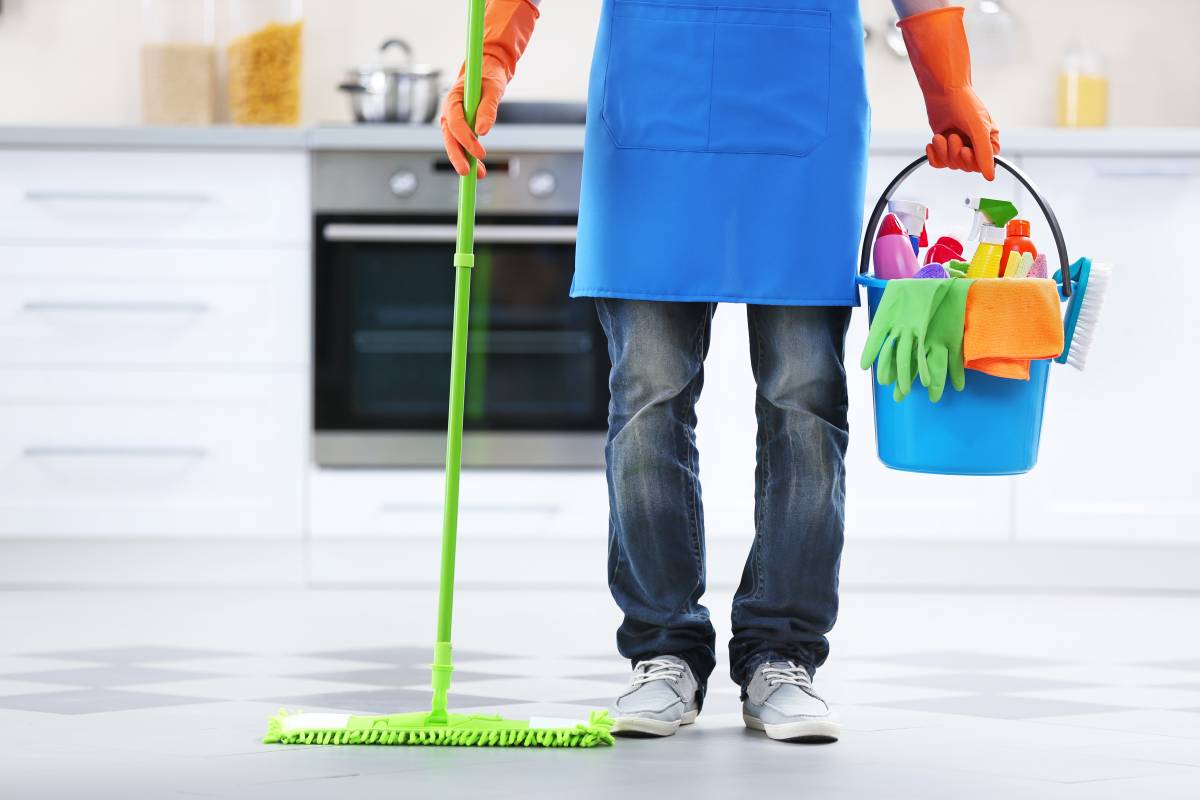
How much does house cleaning cost?
Read more
